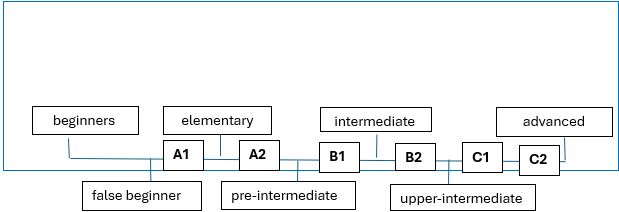Differentiating Language Levels
Differentiating Language Levels
Students are generally described in six different language learning levels: beginners, elementary, lower-intermediate (also referred to as pre-intermediate), intermediate, upper-intermediate and advanced. Sometimes there is a distinction between real beginners (who do not have any knowledge of the language) and false beginners (who have been exposed to the language learning before and picked up some basic knowledge of English). It is often said that students can complete a level in between 90-120 hours of instruction.
There are also other ways of describing levels. The Council of Europe and the Association of language Testers of Europe have come up with Common European Framework of Reference for Languages (CEFR), which is now used in countries around the world. This classification distinguishes between A1, A2, B1, B2, C1, C2 levels and has clear prescription in terms of what students can do at each level. For the classification of the language levels, please refer to the diagram below.

(Harmer, J. Essential Teacher Knowledge. Core Concepts in Language Teaching, 2012).
